Cool Character Ideas to Draw
Learning how to design a character is piece of cake if you follow these 5 simple steps
This is part 1 of a 3-office series on designing characters
- Part 1 [You Are Hither]– Character design tips for improve concept art
- Part 2 – How to write an outline for your character
- Role iii – Building the perfect reference library
Want to pick up some simple character design tips to help you create a limitless range of characters for your concept art?
Outset right here…
Equally y'all'll soon find, there'southward a whole lot that goes into designing a character before you've even started drawing annihilation.
And this is the function where many people become incorrect, because they leap right into the drawing before doing any of the necessary prep work.
Audio familiar? We've all fabricated this mistake at some indicate, but the solution is right here in our 5 character design tips…
When y'all follow these five steps of how to design a grapheme, yous'll accept everything you lot need to create characters full of life.
Why? Because you'll take washed all the necessary prep work to make them believable.
Step 1 – Observe Your Character By Writing an Outline
If you're working on someone else'due south project, you should already have a proficient thought of the world this new character volition be part of.
However, if you're creating something of your own from scratch, this is a very necessary step which you shouldn't avert. In fact, it'due south probably one of the most important character blueprint tips yous'll ever hear!
In your outline, you need to focus not only on how to design a character, only besides on the universe they're part of, or the type of globe they live in.
If the story is based on real world places and events, this tin can exist much easier than if you are creating everything from scratch.
Depending on how far y'all want to go with this exercise, your outline could be as short as a few sentences, or something that spans several pages.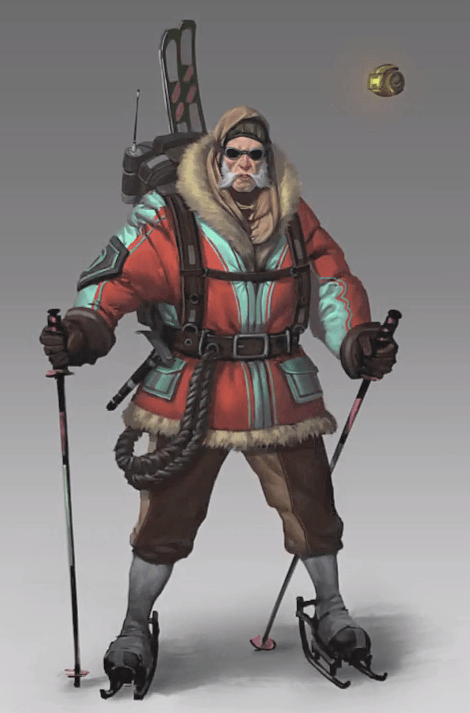 But make sure not to have this footstep lightly. It's essential – particularly when y'all are learning how to design a grapheme for the first time.
But make sure not to have this footstep lightly. It's essential – particularly when y'all are learning how to design a grapheme for the first time.
The goal here is to fully empathise how your graphic symbol fits into this earth. And, the more you know this, the easier it is going to be to determine which details to add and which to get out out when you lot commencement drawing.
So how practice you put together an outline?
It's really easier than you might think, then cleft open your notebook, or open a writing program on your computer.
This blog post on how to write an outline for your characters will requite you plenty of graphic symbol design tips to help y'all get started.
The purpose of the outline is to write out all the relevant details for your character. And, when you do this, yous should get deeper than just surface level details and really think near the function this character will play.
Think about what your character will be doing, and what kind of equipment and wear would exist suited to that function. Then recall about how your character got to where they are now – what'due south the dorsum story?
Once yous feel yous really have a sense of who this person is and how they fit into the world, then you're ready to move onto the adjacent step of our character blueprint tips.
Pace 2 – Become Deeper With Inquiry
With your outline in hand, information technology's fourth dimension to outset earthworks in and collecting research materials.
We recently spoke with an art director at Pixar for the Pencil Kings Podcast and asked where he saw most new artists making a critical fault when learning how to design a character.
Can y'all guess what he said?
His answer was that artists just aren't doing enough research.
And, by research, we hateful collecting the visual references and understanding your character on a deeper level.
This blog postal service on putting together the perfect reference sheet is crammed with grapheme design tips to help y'all get the most from your enquiry.
For the visual references, in that location are 2 types: Direct and Indirect reference.
For direct reference you could look at similar video games, films, comics etc and observe examples of what your character should look similar. This type of reference is great, because you are looking at what has already gone through multiple iterations to go to its final form.
The trouble with direct reference, however, is this: There's a chance your work could appear derivative at all-time…and a rip-off at worst!
To give you a real world example of this, yous may be working within a sci-fi themed universe, and determine to use the characters from the Aliens motion picture every bit your chief point of reference.
For indirect reference you are looking at photographs and real earth objects that tin inspire yous to create new types of piece of work. For example, if your story was ready in the neat depression, then it would make sense to look at photographs from that era.
In doing this, you could run into what speaks to you lot, and what you want to bring forward with your own design.
By looking at lots of reference, not only of people but of objects and environments of the fourth dimension, you lot tin can go a much better sense of the world your character needs to be placed in. Yous'll also know which details would (and would not) exist appropriate for them.
You lot may also want to expect at forms in nature and use those as jumping off points for your designs. You'd be surprised at how many designs are actually based off all the foreign life in the ocean we rarely become a chance to view.
Trips to the museum or art galleries are also highly encouraged hither. Remember to have your photographic camera, because I can guarantee you're going to meet some really inspiring stuff you'll want to capture.
Y'all might also want to cheque out this podcast with Donato Giancola – an creative person who has visited museums all over the world for inspiration.
During the enquiry phase, you need to be collecting all these materials then you can get back later on and review them all together. You never know what may spark an thought, and it'southward best to take these laid out and so you can go back into them at a later time.
There is such a affair as doing 'too much research' and if yous experience similar y'all're going overboard, you probably are. Don't allow the research phase become you stuck. Collect what yous can then continue to move forward.
Here y'all can run across an example reference sheet which was put together to explore what Victorian era explorers looked like.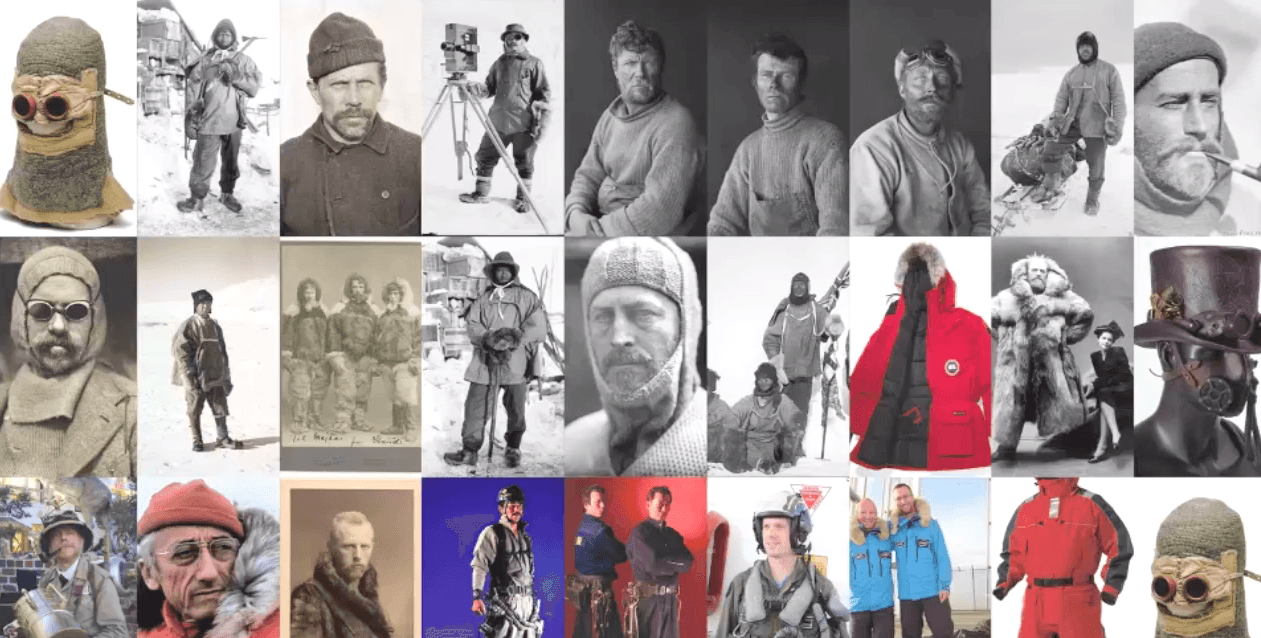
Footstep 3 – Commencement Designing Your Character Thumbnails
Once you know who your character is (Step 1) and accept washed the necessary research and visual exploration (Step 2), information technology'due south time to finally offset drawing your character.
To starting time off, you'll only be working with thumbnail images. The reason for this is so you lot can piece of work pocket-sized and rapidly, and create many different ideas before choosing one final thumbnail to movement forward with.
Y'all can create your thumbnails as silhouettes similar in the instance below, which really frees your mind up from worrying most all the little details.
Y'all'll take time to get to those details, merely correct now you're just trying to go out as many possibilities as yous tin can quickly past drawing on what you learned during the previous two steps.
While you are at this stage and working digitally, don't be shy near using the warp, transform and liquify tools. Employ whatever yous need to piece of work fast.
How to Pattern a Graphic symbol: Creating Poses
Remember, your goal at this stage of our character design tips is to come up with an interesting pose and silhouette. You'll also need to go along in mind who your character is going to exist, and how they volition fit into the universe they are being designed for.
Once you accept your silhouettes created, the next step is to cut back into the designs by either erasing or using white to add in some broad details so you get a better sense of the character.
At this point, yous may start to worry whether you lot have the skill or not to create a convincing grapheme. Don't sweat it! Information technology'southward important to call up that, right now, you are the designer.
You are trying to come up with something unique, cool, interesting, and intriguing. And, to do this, you lot can describe from the references and the outline.
The prototype beneath shows thumbnail silhouettes created for the Scientific Explorer Character Blueprint Course.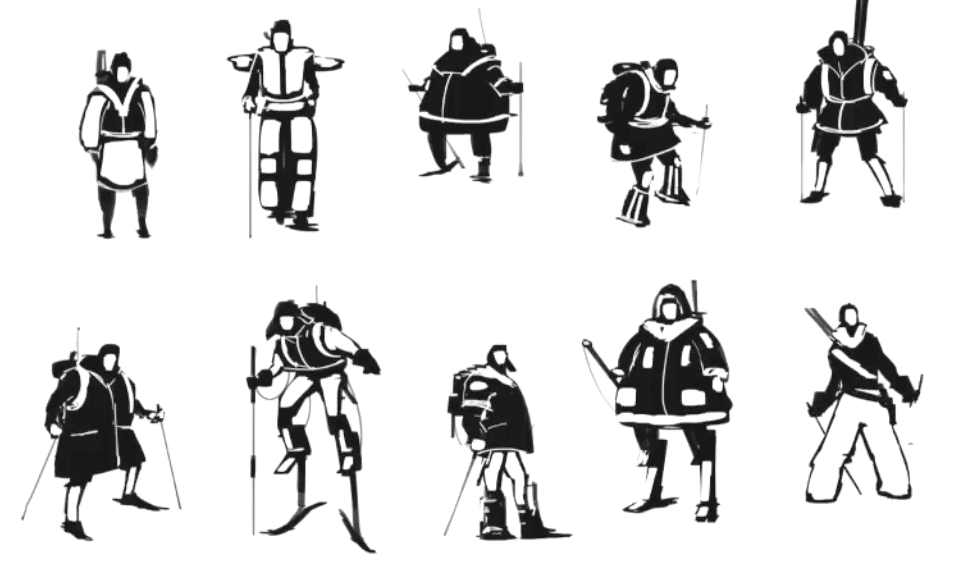
Pace four – Blocking in & Detailing Your Character
Once you take your thumbnails drawn out, it's fourth dimension to select one of them to motion forward. And, by going through the first 4 phases of character blueprint, yous'll be able to choose the best of several designs.
Through making these designs, you'll already have incorporated so much information from your inquiry and outline that you'll be more than fix to move forward.
And if you nevertheless don't feel you take a thumbnail that is jumping out at this bespeak,it's completely OK to get in and exercise even more thumbnails until you get something you lot're excited nigh!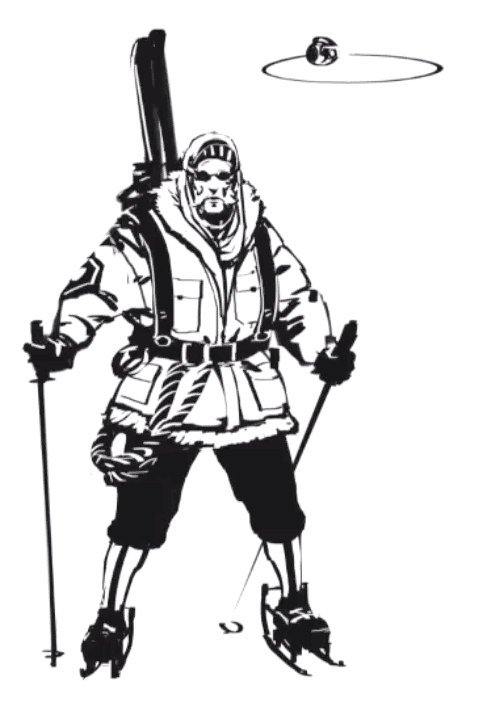
With your thumbnail in manus, it's time to start blocking out. This is where you will become in and add all the footling details that really make upwardly your graphic symbol.
Once you are washed with this stage, y'all should be at a betoken where you could call it quits and have your graphic symbol design in hand, or hand information technology off to someone to accept it to the next phase.
If there's a 'hardest' part of our character design tips, this might be it.
If you find your skills aren't quite at the level you want them to be, we have a whole library of art courses you tin can use to make the improvements you lot demand. If you're interested you lot can find out more nigh our courses here.
You tin see an example above of the explorer scientist we've been using for this article with lots of boosted details added in. There isn't any colour on this prototype, but there is plenty detail for you to know where all the major parts of the character pattern should go, and you tin can really get a sense of their grapheme.
Step 5 – Rendering
This is the last one of our character design tips.
And the best part?
To exist completely honest, information technology is oftentimes not needed for many character designs.
Why? Because there is a misconception that graphic symbol pattern and concept art are all about creating highly polished works of art.
But hither'due south the reality. In a real product, yous may be tasked with coming upward with several character designs every twenty-four hours.
And, because of this, you merely won't accept time to take the work to a completely rendered and 'finished' await.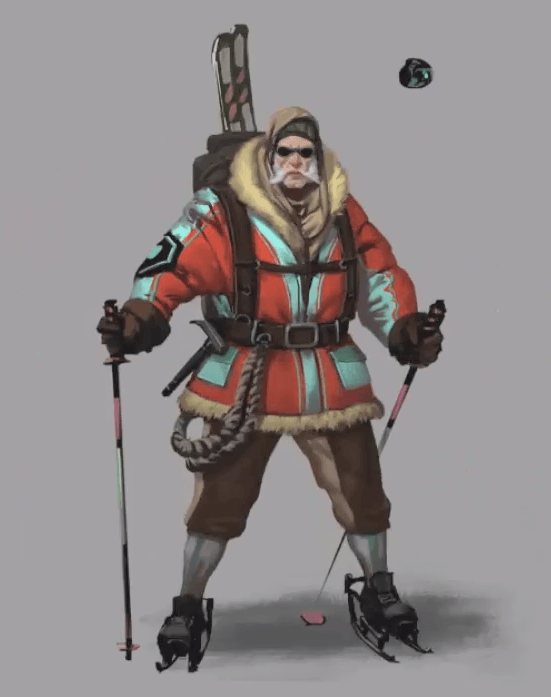
However, there is a level of rendering that yous need to get to. Information technology's and then yous can get an idea of the different materials, the overall colors of the graphic symbol, and whatsoever special effects that need extra attention.
Information technology's really up to you how far you desire to take your rendering. And if this is a fundamental character for your story, information technology may exist totally worth the extra time.
Likewise, if this grapheme is going to be handed off to an external team (where you can't explain some of the design decisions yous made), you'll need to brand certain all that information is communicated with the image.
Source: https://www.pencilkings.com/character-design-tips/
0 Response to "Cool Character Ideas to Draw"
Enregistrer un commentaire